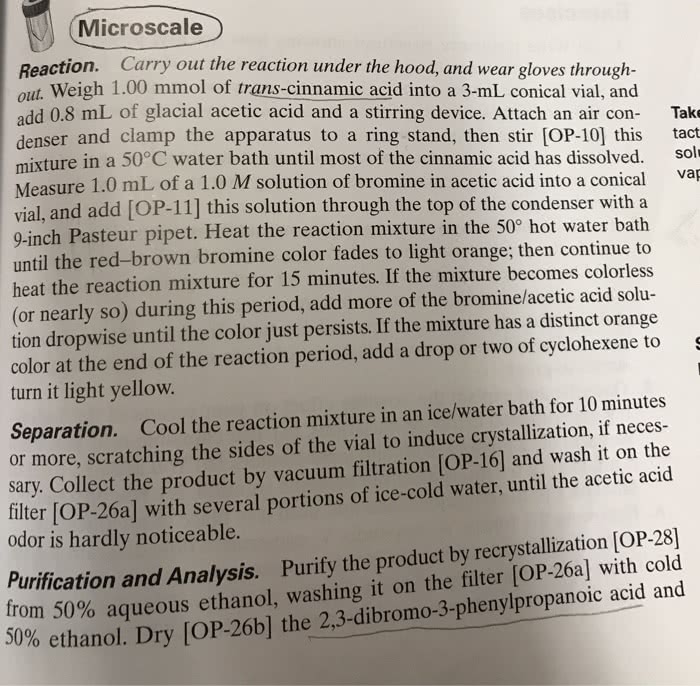CHEM-L212 Lecture Notes - Lecture 9: Pyridinium, Bromine, Bayerischer Rundfunk
Document Summary
Department of chemistry & biochemistry. Recommended resources: website ~ reflux http://what- when- how. com/organic- chemistry- laboratory- survival- manual/reflux- laboratory- manual, video ~ a brief introduction to refluxing http://www. youtube. com/watch?v=b6xfaekjmgg, video ~ reflux reactions http://www. youtube. com/watch?v=5i1s6evkpe4. You will then perform the reaction and use the melting point of the product to test your hypothesis. Lab 9: addition of bromine to trans- cinnamic acid. Before conducting the experiment, predict which of the four possible products (shown below) you expect to see. Additionally, (2s,3s)- 2,3- dibromo- 3- phenylpropanoic are enantiomers and will also melt at the same temperature (95 c). Include molecular weight, molar equivalents, and mmoles to be used. For solids (i. e. , trans- cinnamic acid, pyridinium tribromide) include grams to be used. Safety notes: pyridinium tribromide is corrosive and a lachrymator. Make sure to wear gloves and handle this chemical in the fume hood. Write your report according to the guidelines described in topic 4: writing an organic chemistry. Work by yourself on this report.


